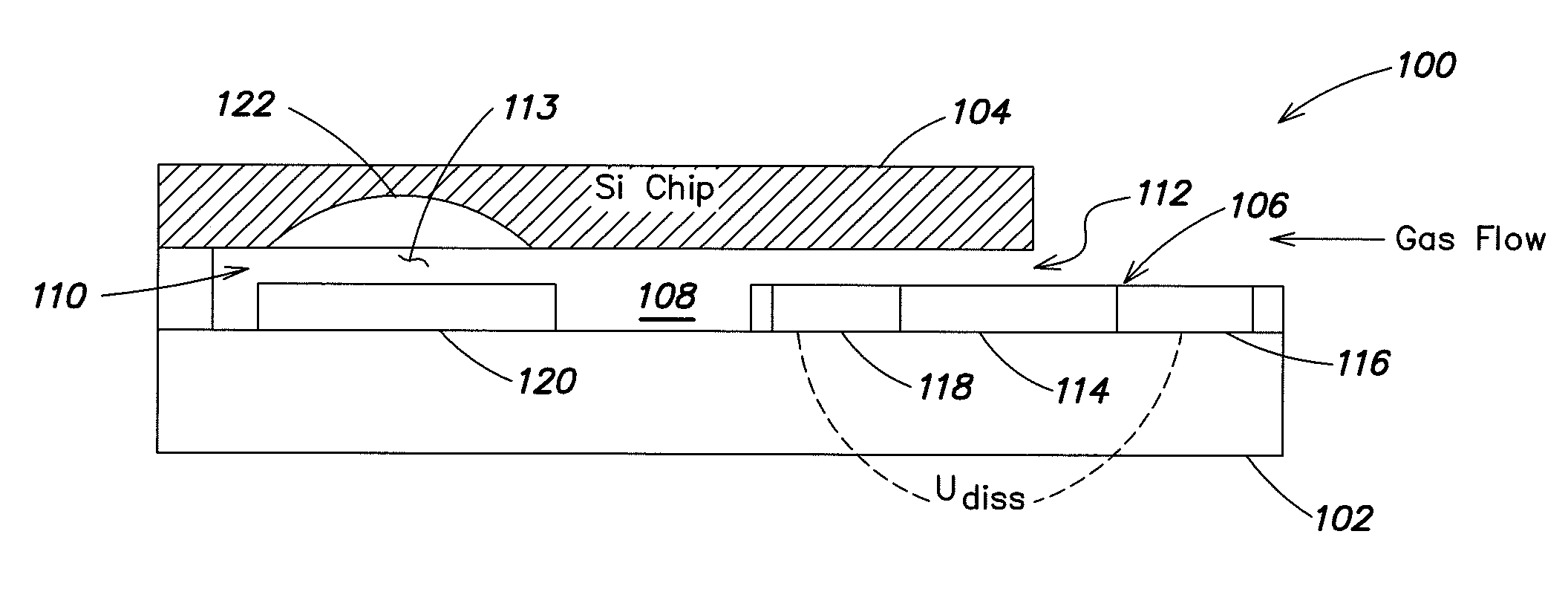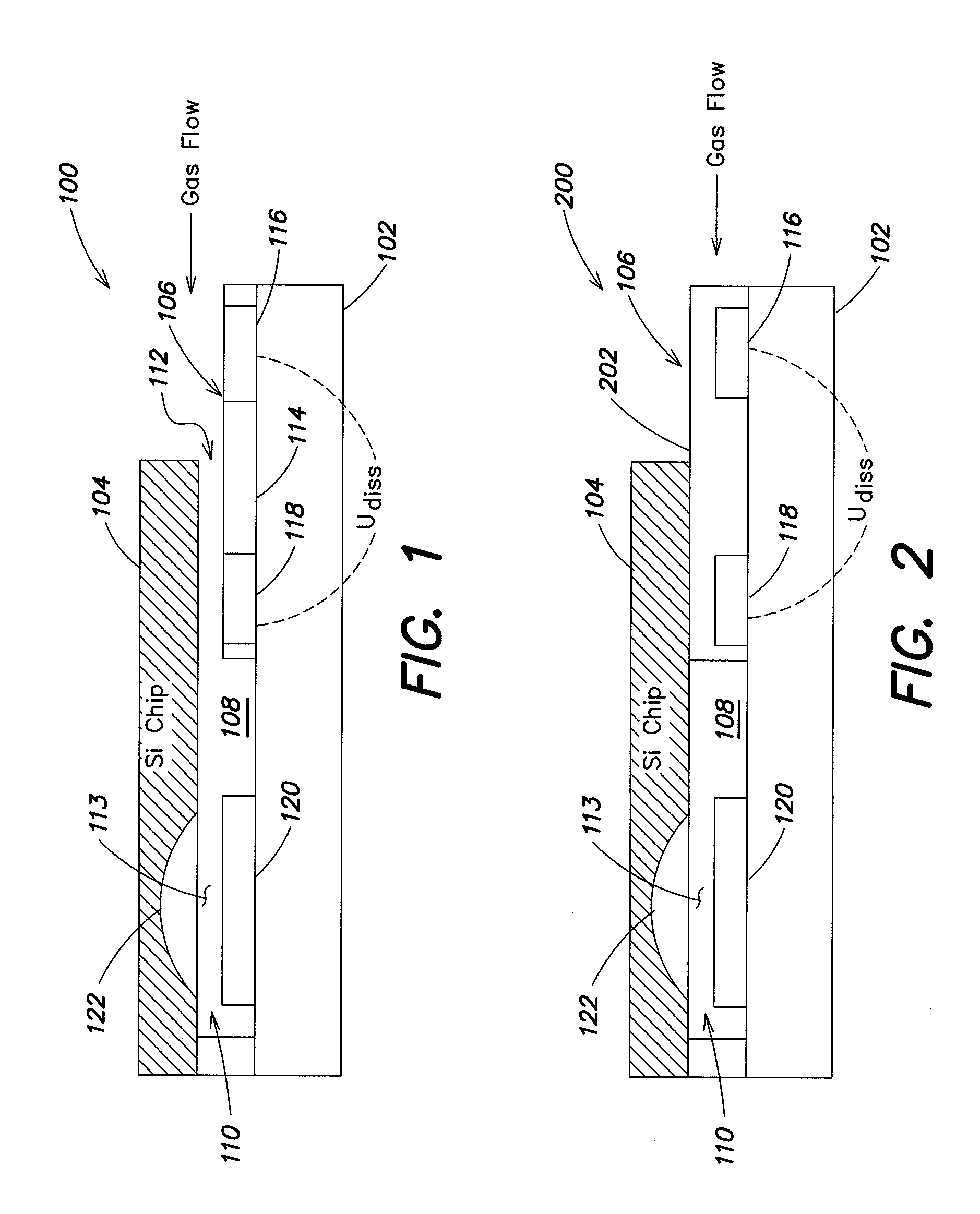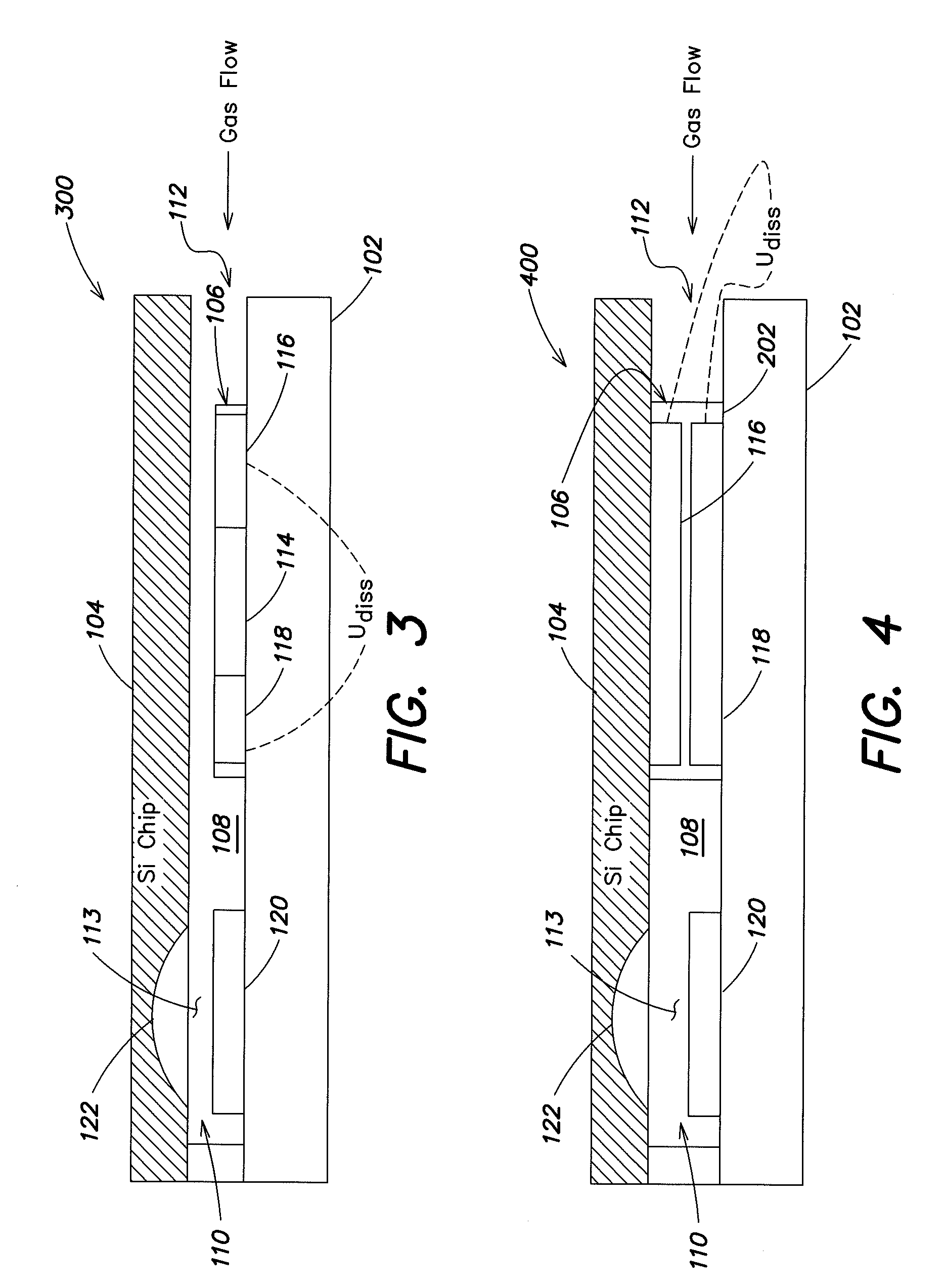FET-based gas sensor
a gas sensor and fet technology, applied in the direction of material thermal analysis material analysis using sonic/ultrasonic/infrasonic waves, etc., can solve the problem of reducing the signal level of the target gas, affecting the sensitivity of the second sensor, and affecting the measurement accuracy
- Summary
- Abstract
- Description
- Claims
- Application Information
AI Technical Summary
Benefits of technology
Problems solved by technology
Method used
Image
Examples
Embodiment Construction
[0026]FIG. 1 illustrates one embodiment of an FET gas sensor system 100. The sensor 100 includes a carrier substrate 102, a chip 104 (e.g., a silicon chip), an electrochemical element / structure 106, a gas channel 108 (also referred to as a “gas diffusion channel”), and a detection area 110.
[0027]The carrier substrate 102 is constructed from any desired nonconductive material that allows, for example, only the preparation of the layers disposed on it. Suitable materials include, but are not limited to, ceramics (e.g., Al2O3, AlN, or Si3N4), glasses, or polymeric materials (e.g., conventional PCB materials like FR4 or the like).
[0028]The gas channel 108 includes an air inlet 112. The air inlet 112 is defined between the silicon chip 104 and the electrochemical element 106 such that entry of gas (or a gas mixture) and its diffusion to a sensor area / gas gap 113 (i.e., the region between the sensitive layer 120 and the transistor 122) is sharply limited. That is, the air inlet 112 thus t...
PUM
 Login to View More
Login to View More Abstract
Description
Claims
Application Information
 Login to View More
Login to View More - R&D
- Intellectual Property
- Life Sciences
- Materials
- Tech Scout
- Unparalleled Data Quality
- Higher Quality Content
- 60% Fewer Hallucinations
Browse by: Latest US Patents, China's latest patents, Technical Efficacy Thesaurus, Application Domain, Technology Topic, Popular Technical Reports.
© 2025 PatSnap. All rights reserved.Legal|Privacy policy|Modern Slavery Act Transparency Statement|Sitemap|About US| Contact US: help@patsnap.com



